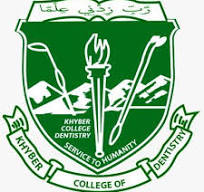HAND INJURIES AND ITS ASSOCIATED FACTORS: A CROSS-SECTIONAL STUDY AMONG INDUSTRIAL WORKERS AT HAYAT ABAD, PESHAWAR.
DOI:
https://doi.org/10.33279/jkcd.v8i01.460Keywords:
Hand injuries, Industrial workers, Occupational HealthAbstract
Objective:To determine the frequency, pattern and associated factors of hand injuries among local industrial workers of Hayatabad Peshawar and the type of industry commonly lead to hand injuries.
Materials And Methods:A cross-sectional study conducted at Social Security Hospital, Hayatabad, Peshawar started from October 2015 to March 2016 by using consecutive sampling technique by taking all participant having work-related injuries. Proportions were compared using chi-square (χ2) tests. Results:A total of 154 industrial workers having a history of industrial injury were interviewed at social security hospital industrial state Hayatabad, Peshawar. The mean age of the participants was 32 years (SD
9.8) with a maximum age of 56 years and a minimum age of 14 years. Ninety-seven percent (n=150) of all the study participants were male, and 2.60 % (n=04) were female. While those with hand injuries, 96% (n=24) were male. Out of the total 154 participants, 16.23 % (n=25) had hand injuries while 83.77 % (n=129) suffered from other injuries. Laceration 44% (n=11) was in high proportion among all the pattern of hand injuries, followed by tendon injury 24% (n=6) and fracture 12%(n=3), while traumatic finger amputation was 20% (n=5).
Conclusion:Instructing the safety standards to labourers and motivate them to utilise some protective instruments, supervising the working performance of young, inexperienced workers, stressing the perception of law, hygienic and use of protective equipment can reduce the event of occupational hand injuries.
Downloads
Published
How to Cite
Issue
Section
License
Copyright (c) 2018 Farhad Ali, Sultan Zeb Khan, Naeem Ullah, Abdul Khaliq, Zia Ul Haq

This work is licensed under a Creative Commons Attribution-NonCommercial-NoDerivatives 4.0 International License.
You are free to:
- Share — copy and redistribute the material in any medium or format
- Adapt — remix, transform, and build upon the material
- The licensor cannot revoke these freedoms as long as you follow the license terms.
Under the following terms:
- Attribution — You must give appropriate credit , provide a link to the license, and indicate if changes were made . You may do so in any reasonable manner, but not in any way that suggests the licensor endorses you or your use.
- NonCommercial — You may not use the material for commercial purposes .
- No additional restrictions — You may not apply legal terms or technological measures that legally restrict others from doing anything the license permits.









